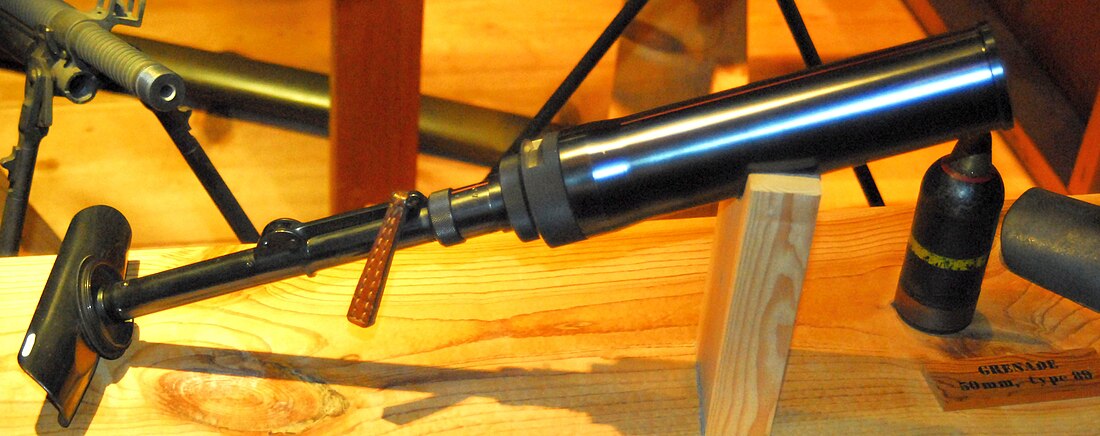Top Qs
Timeline
Chat
Perspective
Type 10 grenade discharger
Japanese WWII grenade launcher From Wikipedia, the free encyclopedia
Remove ads
The Type 10 grenade discharger (十年式擲弾筒, Juu-nen-shiki tekidantō) was a Japanese smoothbore, muzzle loaded weapon used during the Second World War.
Remove ads
History
The Type 10 first entered service in 1921.
World War II era US intelligence thought that the Type 10 was primarily used to discharge signal flares, the larger and heavier Type 89 grenade discharger being used to fire explosive rounds instead. This assessment was largely correct, although the Type 10 grenade discharger could fire and was issued with the Type 10 high-explosive shell.[3]
In 1934, Hanyang Arsenal made clones of the Type 10.[4] Shanxi Arsenal also made Type 10 clones.[4]
Remove ads
Design
The Type 10 has a range of 175 m (191 yd), greater than other grenade dischargers of that time. It had a range control device at the base of the barrel in the form of a graduated thimble by which a gas port at the base of the tube could be varied in size. For shorter ranges, part of the propellant gases escape to the side.
The manual for the mortar instructed the troops to carry the mortar on the upper thigh, with the base plate attached to the belt and the barrel running down the thigh. It was not strapped or secured directly to the thigh.[5]
It was also carried strapped to the backpack.
Ammunition
- Type 91 grenade
- Type 11 smoke shell
- Type 10 HE (high explosive) shell
- Type 10 flare shell
- Type 10 signal shell
- Type 91 pyrotechnic grenade
- Type 10 blank
- A Type 91 grenade.
- A Type 10 grenade discharger
Misconception
Due to a translation error, the Type 10 was called the "knee mortar" by the Americans.[5]
American troops on Guadalcanal became aware of the name "knee mortar" and thought the light design allowed it to be fired with the base plate resting on the thigh. If the Type 10 were fired in this manner, it would result in serious injury due to recoil.[5]
Remove ads
Users
 Empire of Japan: Imperial Japanese Army
Empire of Japan: Imperial Japanese Army Republic of China: Used by 29th Route Army.[4]
Republic of China: Used by 29th Route Army.[4]
References
Bibliography
Wikiwand - on
Seamless Wikipedia browsing. On steroids.
Remove ads



